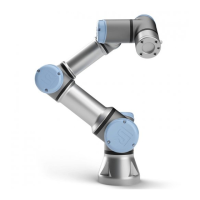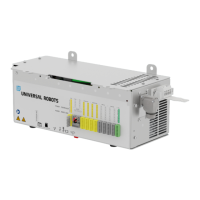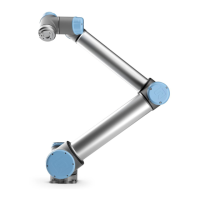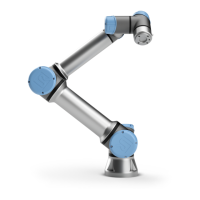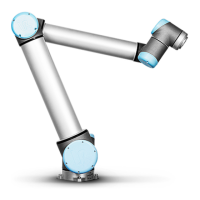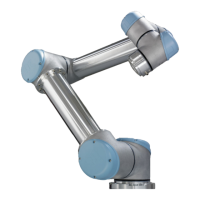13.8 Installation → I/O Setup
• Analog standard general purpose and tool
• MODBUS
• General purpose registers (boolean, integer and float) The general purpose registers can be
accessed by a fieldbus (e.g., Profinet and EtherNet/IP).
13.8.1 I/O Signal Type
To limit the number of signals listed in the Input and Output sections, use the View drop-down
menu at the top of the screen to change the displayed content based on signal type.
13.8.2 Assigning User-defined Names
To easily remember what the signals do while working with the robot, users can associate names
to Input and Output signals.
1. Select the desired signal
2. Tap the text field in the lower part of the screen to set the name.
3. To reset the name to default, tap Clear.
A general purpose register must be given a user-defined name to make it available in the program
(i.e., for a Wait command or the conditional expression of an If command) The Wait and If com-
mands are described in (14.11) and (14.20), respectively. Named general purpose registers
can be found in the Input or Output selector on the Expression Editor screen.
13.8.3 I/O Actions and I/O Tab Control
Input and Output Actions: Physical and Fieldbus digital I/Os can be used to trigger actions or react
to the status of a program.
Available Input Actions:
• Start: starts or resumes the current program on a rising edge.
• Stop: Stops the current program on a rising edge.
• Pause: Pauses the current program on a rising edge.
• Freedrive: When the input is high, the robot is in freedrive ( similar to the freedrive but-
ton). The input is ignored if a program is running or other conditions disallow freedrive.
WARNING:
If the robot is stopped while using the Start input action, the robot
slowly moves to the first waypoint of the program before executing
that program. If the robot is paused while using the Start input ac-
tion, the robot slowly moves to the position from where it was paused
before resuming that program.
Available Output Actions:
• Low when not running: Output is low when the program state is “stopped” or “paused”.
• High when not running: Output is high when the program state is “stopped” or “paused”.
CB3 II-48 Version 3.10
Copyright © 2009–2019 by Universal Robots A/S. All rights reserved.
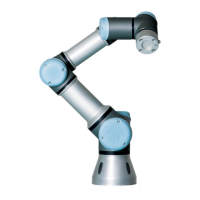
